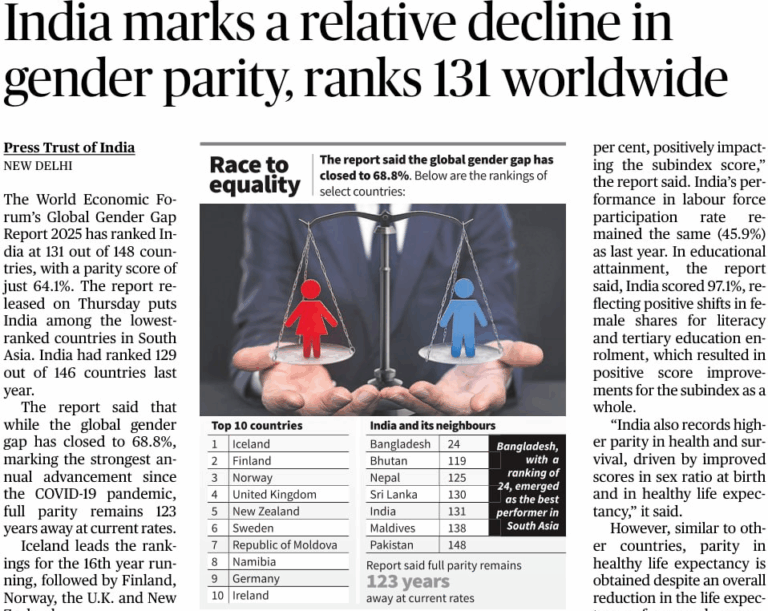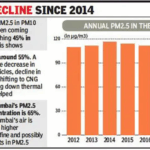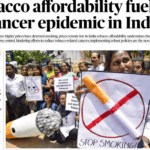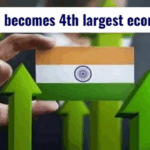India’s Population Hits 146.39 Crore: UNFPA Report 2025
Why in the News?
The United Nations Population Fund (UNFPA) in its latest flagship report – “State of the World Population 2025: The Real Fertility Crisis” – estimates India’s population to have reached 146.39 crore (1.4639 billion) by April 2025.
- It confirms India’s status as the world’s most populous country, overtaking China, which is estimated at 141.61 crore.
- The report also highlights a significant demographic shift: India’s Total Fertility Rate (TFR) has dropped to 1.9, below the replacement level of 2.1.
- It projects that India’s population will peak at around 170 crore in the next 40 years before beginning to decline, raising critical questions about the nation’s long-term demographic, economic, and social stability.

Background
India has long grappled with the challenge of rapid population growth. From 361 million in 1951, the country’s population grew to 1.21 billion in 2011, according to census data. The 2021 Census was delayed due to the pandemic and is now expected by March 2027.
Historically, India’s Total Fertility Rate (TFR) was 5.9 in 1951, which dropped to 2.0 by 2021, according to the Sample Registration System (SRS).
Demographic Transition Model (DTM)
India is currently transitioning from Stage 3 to Stage 4 of the DTM:
- Stage 3: Declining fertility and mortality
- Stage 4: Low fertility and low mortality, stable or declining population
With a TFR of 1.9, India has officially entered below-replacement fertility, similar to countries like China, South Korea, and many in Europe.
Features of India’s Demographic Profile
Population Size
- 146.39 crore (as of April 2025)
- Expected to peak at 170 crore by 2065
Total Fertility Rate (TFR)
- Declined to 1.9 (UNFPA)
- Replacement rate is 2.1
- Varies across states: higher in Bihar (2.98), lower in Kerala, Tamil Nadu, Delhi (<1.8)
Youth Bulge
- 24% aged 0–14 years
- 26% aged 10–24 years
- Demographic dividend window still open, but closing fast
Working-Age Population
- 68% between 15–64 years
- Potential economic driver, known as the Demographic Dividend
Elderly Population
- 7% aged 65+ in 2025
- Expected to double by 2050
- Rising old-age dependency ratio
Life Expectancy
- 71 years for men, 74 years for women
- Improved from 63 (1991) to 72.5 (2025)
Urban-Rural Divide
- The urban population is growing rapidly
- But the fertility transition started earlier in urban areas
Challenges
The ‘Real’ Fertility Crisis: Agency, Not Arithmetic
- The report shifts focus from numbers to reproductive agency – the right to freely decide family size, contraception, and timing of childbirth.
- Unmet contraceptive needs, gender inequality, and social coercion persist.
Regional Imbalances
- States like Bihar, Uttar Pradesh, and Jharkhand still have high TFRs and poor health indices.
- This creates a dual burden: population momentum in some states, and population ageing in others.
Shrinking Demographic Dividend
- India’s median age is rising (currently ~29 years).
- The demographic dividend will decline post-2040.
- Lack of quality jobs, skilling, and labour reforms may waste this potential.
Ageing Population and Social Security
- The elderly population is expected to be over 20% by 2050.
- India lacks comprehensive pension, geriatric healthcare, and elderly insurance systems.
Urban Overcrowding and Infrastructure Stress
- A growing population in metros creates a burden on housing, water, transport, and waste.
- Slums and informal settlements proliferate.
Women’s Workforce Participation
- Paradox: falling fertility but low female labour force participation rate (~25%)
- Cultural, economic, and safety issues restrict women’s economic empowerment.
Education and Health Gaps
- Uneven access to reproductive health, education, and sanitation.
- Large sections of youth are NEET (Not in Education, Employment, or Training).
Census Delay and Data Vacuum
- India’s last census was in 2011; without the 2021 census, planning is based on outdated projections.
- Absence of real-time granular data hurts policy targeting.
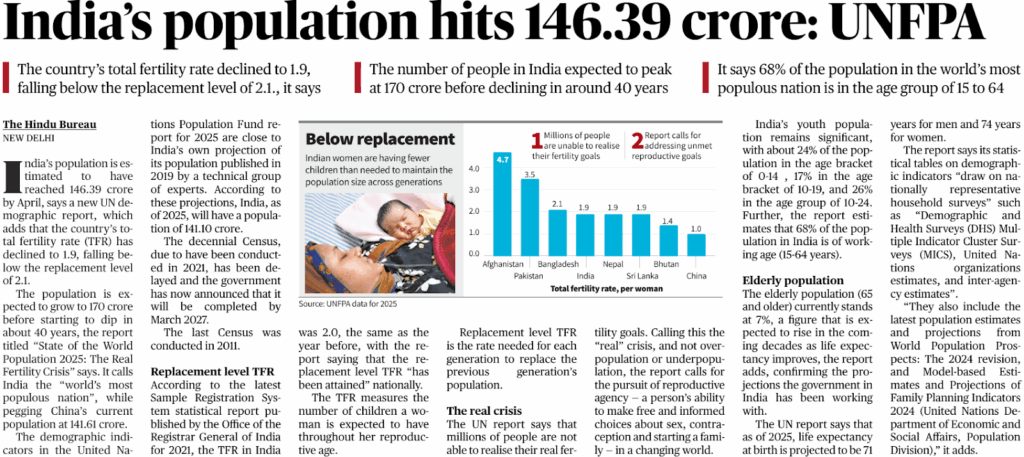
Way Forward
Strengthen Reproductive Rights and Health
- Ensure universal access to family planning services
- Improve access to contraceptives, reproductive health literacy, and menstrual health
- Promote consensual family planning, not coercion or incentives
State-Specific Population Policies
- Avoid “one-size-fits-all” population control narratives
- High fertility states need targeted interventions in women’s education, nutrition, and health
- Low fertility states need ageing policy frameworks
Census 2027: A Critical Priority
- Ensure a transparent, comprehensive, and digital-friendly census
- Use geospatial tools, Aadhaar integration, and AI to enhance data fidelity
Harness the Demographic Dividend
- Focus on skilling, employability, and entrepreneurship
- Leverage schemes like PMKVY, Skill India, and Startup India
- Reform labour laws and incentivise youth-centric industries
Prepare for Population Ageing
- Build a robust pension and health insurance ecosystem
- Promote geriatric care, senior citizen welfare policies
- Encourage community-based care and active ageing programs
Women’s Empowerment is Central
- Invest in education, transport, workplace safety, and childcare infrastructure.
- Implement laws like the Maternity Benefit Act, POSH, and equal pay provision.s
- Promote women-led entrepreneurship and STEM education
Urban Planning for Population Density
- Encourage smart cities, satellite towns, and decongested metros
- Invest in sustainable transport, vertical housing, and water recycling
- Involve urban local bodies in participatory governance
Cross-Sectoral Investment
- Link population policy with education, health, agriculture, urbanisation, and climate resilience
- Avoid focusing merely on numerical control and embrace a human development approach.
Promote Public Awareness
- Encourage media, schools, and community groups to spread rational discourse on population.
Counter misinformation around the population explosion narrative.
Conclusion
India’s journey from high fertility to below-replacement fertility reflects a remarkable demographic transformation. However, demographic dividends are not automatic; they must be converted through sound policy, investments in human capital, and inclusive growth.
Frequently Asked Questions (FAQ)
1. What is India’s current population according to the UNFPA 2025 report?
India’s estimated population is 146.39 crore (1.4639 billion) as of April 2025, making it the most populous country in the world.
2. What is the Total Fertility Rate (TFR) in India?
India’s TFR has declined to 1.9, which is below the replacement level of 2.1. This indicates that the population will eventually start to decline unless offset by migration.
3. What is the “replacement level fertility rate”?
The replacement level fertility rate is the number of children a woman must have to replace herself and her partner, typically 2.1, ensuring a stable population in the long run.
MAINS PRACTICE QUESTION
Question: India’s population has reached 146.39 crore, while its fertility rate has declined below replacement level. In this context, critically examine the demographic challenges and opportunities India faces in the coming decades. Also, suggest suitable policy responses to ensure sustainable development. (250 words)
PRELIMS PRACTICE QUESTION
Q. Which of the following statements regarding the UNFPA’s State of the World Population 2025 report and India’s demographic profile is/are correct?
- 1. India’s Total Fertility Rate (TFR) of 1.9 is above the replacement level, indicating a stable population.
- 2. India’s working-age population (15-64 years) constitutes about 68% of the total population.
- 3. The UNFPA report identifies the real fertility crisis as people having more children than they want due to a lack of access to contraception.
- 4. The elderly population (65+ years) in India is expected to decline due to falling fertility rates.
Select the correct option:

